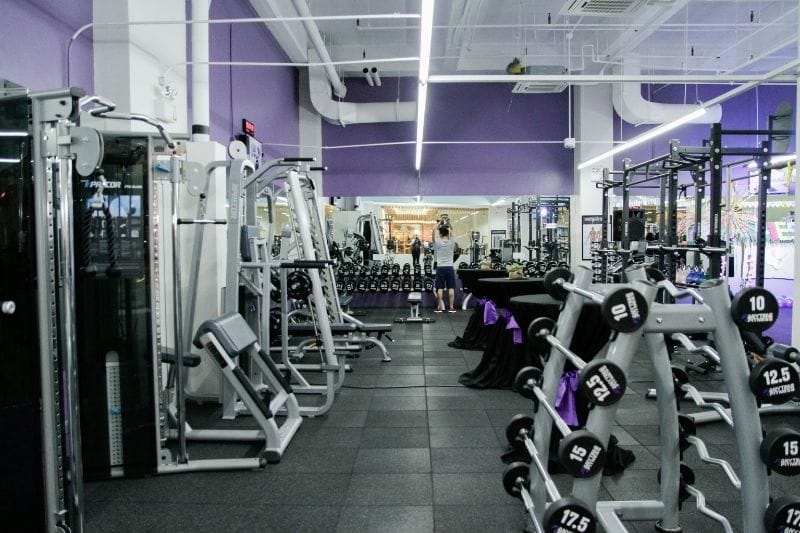Many people still think of fat loss as a cardio only game. If you want to lose weight, you run, cycle or bash away on the cross trainer. Strength training is seen as something separate, maybe useful for athletes or people who want bigger muscles, but not essential for weight loss.
The reality is that strength training is one of the most effective tools you can use when your goal is fat loss. You do not need to live in the gym or become a bodybuilder, but a couple of sensible strength sessions each week can make your diet far more effective and protect your body as the scale moves.
What strength training does for fat loss
You lose fat when you are in a calorie deficit. That simply means that you are taking in less energy than you are using over time. However what you do while you are in that deficit changes how your body responds.
If you diet with no strength work at all, you tend to lose a mix of fat, water and muscle. You may still look smaller on the scale, but often you feel weaker, flatter and less capable. You might even end up with less muscle than before, which can make it harder to maintain your results. Sometimes this is referred to as being skinny fat.
Strength training helps you keep hold of muscle while you lose fat. In some cases, especially if you are new to lifting, you can even build muscle while losing fat. That means more of the weight coming off is actually fat, not the stuff that keeps you strong.
Holding onto muscle has longer term benefits too. Muscle tissue is active. It uses a little more energy even when you are resting than fat tissue does. We are not talking about thousands of extra calories a day, but over time a stronger body can handle food better and makes weight maintenance a little bit easier.
Strength work also tends to improve the way you feel about your body and your training. Many people find that when they train for strength they pay more attention to how they are eating. They enjoy seeing progress in the gym even when the scale is not moving quickly. This helps them stick with their plan instead of giving up.
How much strength training you actually need
You might imagine that you need a complicated programme with lots of different exercises and a strict split routine. For most busy adults that is not necessary.
As a simple rule of thumb, two strength training sessions a week is enough to see benefits for fat loss. A third session can be a bonus if life and recovery allow. Each session can be around thirty to sixty minutes. You can do this in a gym with barbells and machines, or at home with dumbbells, bands and bodyweight exercises.
The aim is to work the major muscle groups through a range of movements across the week. Squatting, hinging at the hips, pushing, pulling and some form of carry or core work covers most of what you need. You do not have to hit every muscle separately with its own special move.
What a simple fat loss strength session looks like
A straightforward session might include three or four main exercises performed for two or three sets of eight to twelve repetitions. You rest long enough between sets that you can perform the work with good form and reasonable effort.
For example a full body session could be:
- Squat or leg press
- Romanian deadlift or another hip hinge
- Press up or bench press
- Row or pulldown
You could finish with a simple core exercise such as a plank or dead bug if you enjoy that (or even if you don’t!).
You can change the exact exercises to suit your preferences, your equipment and any injury history. The important thing is that you use movements that feel stable and that you can repeat regularly.
Do you need heavy weights for fat loss?
You do not have to lift extremely heavy weights to get the benefits of strength training. The goal is to challenge your muscles relative to your current ability.
A useful guideline is to pick a weight where the last two-ish repetitions of a set feel really challenging but you can still complete them with good technique. When that becomes easier, you can increase the weight slightly, add an extra repetition or slow the tempo of the movement. This gradual increase over time is called progressive overload.
If you only have access to lighter weights or bodyweight at home, you can still make progress. You may need to do higher repetitions, pause at the bottom of movements or use slower lowering phases to increase the difficulty.
Bodyweight exercises such as squats, lunges, split squats, press ups, hip lifts and rows can be very effective, especially for beginners. Many people are surprised at how strong they can get with well structured bodyweight training.
Combining strength training with diet and daily movement
Strength training on its own will not guarantee fat loss. It needs to sit alongside a reasonable way of eating and some daily movement.
You do not need a brutal diet. A modest calorie deficit, which might be a two to 500 hundred calories below maintenance for many people, is enough. Eating enough protein is important for muscle retention. Many people do well with a protein source at each meal and snack. Filling the rest of your diet with a mix of whole foods, including carbohydrates and fats that you enjoy, keeps things sustainable.
Daily movement, such as walking, still has an important role. It helps you burn a little more energy without stressing your body, supports mood and recovery, and makes it easier to maintain your results once you reach your target.
Sleep and stress management are often overlooked but vital. Poor sleep and chronic stress make it harder to regulate appetite, recover from training and make good decisions. You do not need perfect sleep routines or spa days, but working towards a slightly more regular sleep pattern and some basic stress tools will support everything else you are doing.
Where coaching fits in
If this all feels a bit overwhelming, it can be helpful to work with a coach who understands both fat loss and strength training. A good coach can design simple programmes that you can do at home or in the gym, adjust your plan around busy weeks and tricky phases, and keep your food approach realistic. I can help you:
FAQs about strength training for fat loss
What is better for fat loss, cardio or weights?
Both have their place. Cardio burns more calories during the session and is great for heart health and fitness. Strength training helps you maintain or build muscle, which shapes how your body looks and supports long term weight management. For most people, a mix of strength training and walking works extremely well.
Will lifting weights make me bulky?
For the majority of people, especially those eating in a calorie deficit, strength training will not make you bulky. Building a large amount of muscle takes years of focused training, plenty of food and often specific training plans. Most clients get a leaner, firmer look from strength work rather than a bigger one.
Can beginners lose fat with strength training?
Yes. Beginners often see some of the best changes because their body is very responsive. With an appropriate calorie intake, enough protein and sensible training, you can lose fat and improve strength at the same time, particularly in the early months.
How long before I see results from strength training?
You may notice improvements in strength and confidence within a few weeks. Visible changes in shape and size usually take longer, often a couple of months or more, depending on how consistent you are with training, food, sleep and stress.
Is it safe to lift weights in your forties and fifties… or older?
Yes, and it can be one of the best investments you make in your long term health. Strength training supports bone density, joint health, balance and independence. The key is to start with appropriate exercises, focus on good form and progress steadily. If you are unsure, getting guidance from a qualified coach is a smart step.




